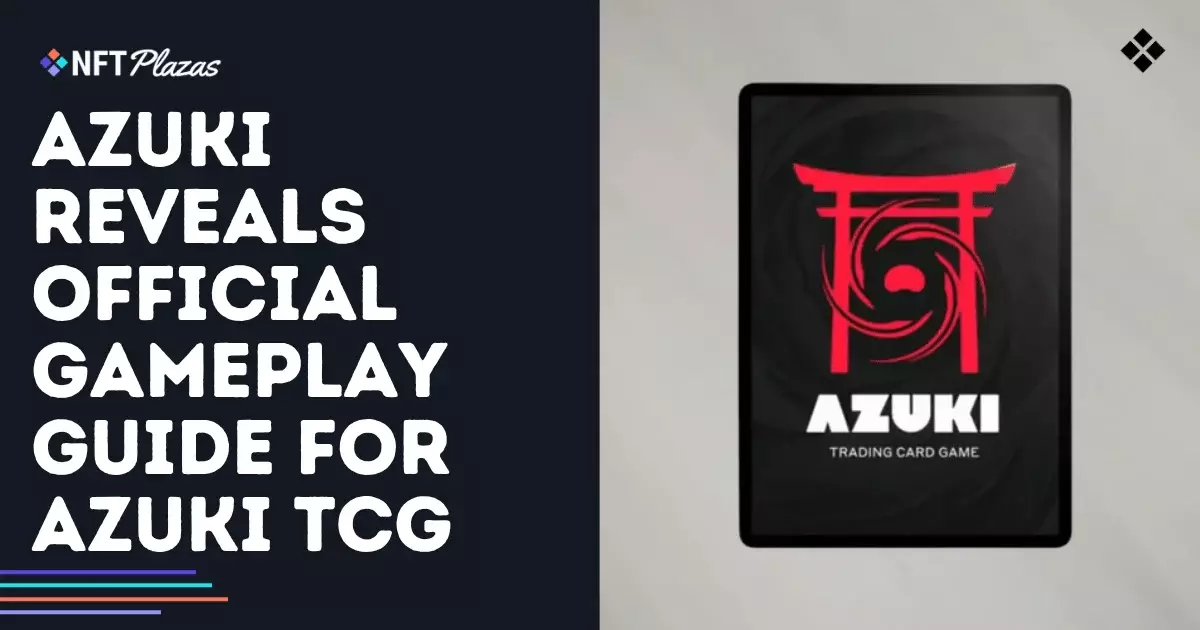The recent release of the Azuki trading card game (TCG) gameplay guide appears, on the surface, to herald a new era of web3-inspired gaming. However, a closer examination reveals a troubling divergence between ambition and practicality. While Azuki positions itself as a cutting-edge blend of blockchain aesthetics and strategic gameplay, it struggles with fundamental design issues that could undermine its long-term success. The game’s structure, ostensibly built upon modern mechanics meant to attract both casual players and competitive enthusiasts, actually exposes a fragile foundation that risks alienating core audiences rather than engaging them.
The guide’s emphasis on complex rules—such as layered resource management, multi-row battlefield tactics, and faction-based gameplay—attempts to impress with sophistication. Yet, these features are only superficial diversions from key shortcomings: lack of clarity, limited innovation, and an over-reliance on blockchain elements that are either underdeveloped or entirely absent. This disconnect raises a critical question—does Azuki truly understand what makes a successful TCG or are they merely riding the wave of current digital trends without addressing the core needs of players?
The Mirage of Blockchain Integration and Strategic Depth
One of the most perplexing aspects of Azuki’s approach is its fixation on integrating blockchain technology. Despite its branding as a web3 brand, the gameplay guide notably omits any mention of digital assets, tokens, or true blockchain mechanics within gameplay itself. This omission is telling; it reveals the game’s primary purpose might not be to innovate through strategic depth but rather to serve as a vessel for future digital asset leverage—when and if the technology is fully implemented.
This default to traditional card game mechanics—such as faction decks, attack zones, and resource management—should be a red flag. It indicates that the blockchain aspect may be more of a marketing gimmick than an integral feature. This superficial integration risks turning the game into a novelty rather than a meaningful experience, especially if players discover that the core gameplay is unremarkable or overly complicated without offering new strategic layers that justify the hype.
The Flawed Foundations of the Game’s Mechanics
Examining the rules reveals structural issues that betray a lack of foresight. The dual-row battlefield system—Garden and Alley—may sound innovative but introduces unnecessary complexity for players trying to grasp fundamentals. Moving cards from Alley to Garden using Gate cards, alongside the timing rules for cards with “Charge” attributes, create an intricate web that can frustrate newcomers if not presented with clarity.
Moreover, resource management via IKZ cards, while reminiscent of popular mechanics like mana or energy, is hampered by the vague description of how resources are generated and used. The game’s victory conditions—depleting the opponent’s Leader or emptying their deck—are typical but lack depth. There’s little indication that strategic diversity is encouraged, which could make high-level gameplay monotonous and predictable.
The card categories—Leaders, Gates, Entities, Weapons, Spells, IKZ—are a standard set, yet the distinctions appear arbitrary and fail to inspire innovative deck-building. Tag effects like “Defender” or “When Attacked” seem underwhelming if they are the extent of the game’s tactical variation.
The Tournament and Hype: Empty Promises or Genuine Potential?
The upcoming tournament in Los Angeles signifies a pivotal moment for Azuki, yet the excitement should be tempered. A game’s success hinges on more than just a few rules or a marketing launch. If the foundational mechanics are flawed or overly convoluted, competitive play will only magnify these issues rather than resolve them. The absence of meaningful blockchain mechanics further undercuts the game’s potential to stand apart in a crowded market where digital assets are supposed to be a differentiator.
Furthermore, the broad expectation of a full launch later in 2025 offers little reassurance; it might be a delaying tactic to patch creaking mechanics or drum up hype without substantive progress. The current design feels more like a skeleton—a skeleton that could collapse under sustained scrutiny and use.
In the end, Azuki’s ambitions seem trapped in a paradox. It aims to blend innovative gameplay with blockchain mystique but ends up embodying neither convincingly. This dissonance will likely limit its appeal, particularly among players seeking engaging strategic depth and a clear understanding of what truly makes a TCG enduring. The game’s future hinges on whether it can strip away superficial trappings and focus on developing mechanics that challenge and inspire, not confuse or frustrate.


Leave a Reply